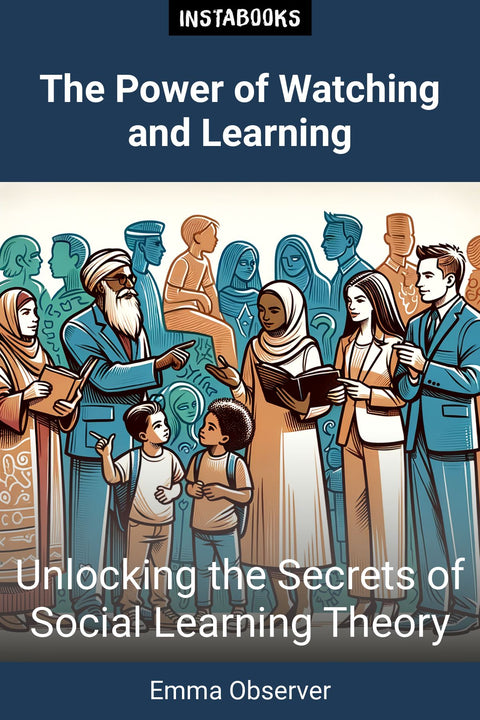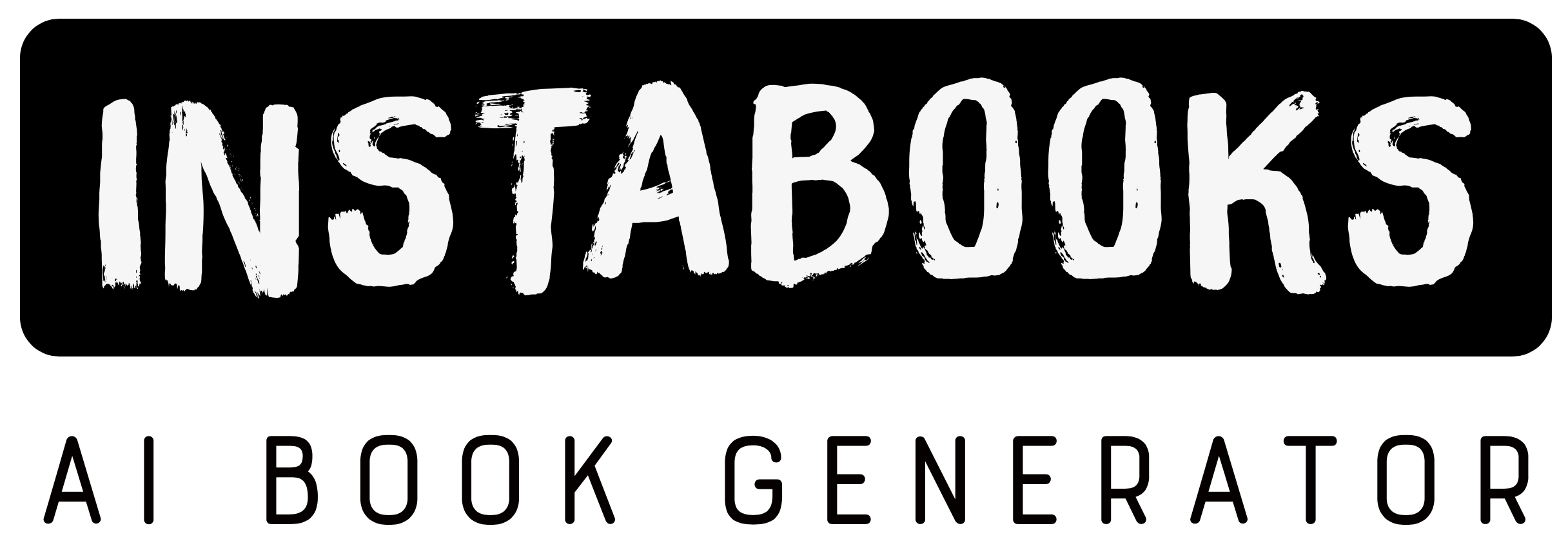
The Power of Watching and Learning
Unlocking the Secrets of Social Learning Theory
Included:
✓ 200+ Page AI-Generated Book
✓ ePub eBook File — read on Kindle & Apple Books
✓ PDF Print File (Easy Printing)
✓ Word DOCX File (Easy Editing)
✓ Hi-Res Print-Ready Book Cover (No Logo Watermark)
✓ Full Commercial Use Rights — keep 100% of royalties
✓ Publish under your own Author Name
✓ Sell on Amazon KDP, IngramSpark, Lulu, Blurb & Gumroad to millions of readers worldwide
AI Book Preview
Below you'll find a comprehensive preview of all chapters in this book. Each section provides a glimpse into the key concepts, practical insights, and valuable knowledge you'll gain.
Chapter 1: The Foundations of Social Learning Theory
Albert Bandura: The Pioneer
Albert Bandura revolutionized psychology by introducing the concept of observational learning, demonstrating how people acquire behaviors by watching others. His groundbreaking experiments, like the Bobo doll study, laid the foundation for understanding how modeling, imitation, and social context shape human behavior.
Key Principles of Observational Learning
Observational learning hinges on four essential processes: attention, retention, reproduction, and motivation, which collectively explain how individuals acquire new behaviors by observing others. Understanding these principles reveals the profound influence of modeling on personal development and behavior change.
The Role of Reciprocal Determinism
Reciprocal determinism reveals how individuals, their behaviors, and their environments continuously influence and shape one another in a dynamic interplay. By understanding this concept, readers will grasp how social learning is deeply embedded in the interconnected forces of personal agency, actions, and external contexts.
Chapter 2: The Four Stages of Learning
Attention: Focusing on the Model
Attention is the foundational stage of learning, where observers must actively focus on the model’s behavior, actions, and context to internalize new skills or knowledge effectively. This section explores practical strategies to enhance attention and maximize the impact of observational learning in everyday situations.
Retention: Storing Observed Behaviors
Retention is the critical process of encoding and storing observed behaviors in memory, enabling their later retrieval and application. This section explores the cognitive mechanisms behind retention, including attention, symbolic representation, and mental rehearsal, to help readers understand how observed actions become ingrained knowledge.
Reproduction: Translating Memory into Action
Reproduction is the critical stage where observed behaviors are transformed into action, requiring both mental and physical rehearsal to bridge the gap between memory and execution. This process highlights how attention, retention, and motivation converge to make learning tangible and actionable.
Chapter 3: Motivation and Self-Efficacy
The Importance of Motivation
Motivation is the driving force behind learning and behavior, shaping how individuals set goals, persist through challenges, and achieve success. This section explores the psychological mechanisms of motivation and its critical role in fostering self-efficacy and personal growth.
Building Self-Efficacy
Self-efficacy is the belief in one's ability to succeed in specific situations, and it can be strengthened through mastery experiences, vicarious learning, and positive feedback. Readers will explore practical strategies to build and sustain self-efficacy, empowering them to tackle challenges with confidence and resilience.
Rewards and Costs in Learning
Understanding the balance between rewards and costs is essential for fostering motivation and persistence in learning. This section explores how intrinsic and extrinsic incentives shape behavior and influence self-efficacy in educational and real-world contexts.
Chapter 4: Applications in Education
Modeling Behavior in the Classroom
Social Learning Theory reveals how modeling positive behaviors in the classroom can shape students’ attitudes, skills, and academic success effectively. Educators will explore practical strategies to harness observational learning, fostering an environment where students thrive both behaviorally and intellectually.
Peer Mentoring and Collaborative Learning
Peer mentoring and collaborative learning harness the power of social interaction to enhance educational outcomes by fostering mutual support, shared knowledge, and collective problem-solving. Readers will explore how these strategies align with Social Learning Theory, offering practical insights for creating dynamic, student-centered learning environments.
Enhancing Problem-Solving Skills
Social learning theory provides powerful tools to enhance problem-solving skills by leveraging observation, imitation, and modeling in educational settings. Readers will explore practical strategies to foster critical thinking, creativity, and adaptability in learners through structured social learning experiences.
Chapter 5: Workplace Training and Development
Onboarding New Employees
Effective onboarding leverages social learning theory to help new employees observe, imitate, and integrate into workplace culture through guided interactions and role modeling. This section explores strategies to design onboarding programs that foster confidence, competence, and collaboration from day one.
Skill Development Through Observation
Observing skilled peers and mentors in the workplace accelerates skill acquisition by allowing learners to model effective behaviors and strategies. This section explores how structured observation fosters competence, confidence, and adaptability in professional settings.
Leadership and Role Modeling
Leadership and role modeling are pivotal in shaping workplace behavior, as individuals learn and internalize effective practices by observing influential figures in their environment. This section explores how leaders can leverage their actions and communication to foster a culture of growth, accountability, and collaboration within their teams.
Chapter 6: Parenting and Child Development
Modeling Social Norms and Values
Parents play a pivotal role in shaping their children’s behavior by modeling social norms and values through their everyday actions and interactions. This section explores how children observe, imitate, and internalize these behaviors, highlighting the profound impact of parental influence on social and moral development.
Teaching Communication Skills
Effective communication skills are essential for children’s social and emotional development, and parents play a critical role in modeling and reinforcing these skills through observation and interaction. This section explores practical strategies for teaching children how to express themselves clearly, listen actively, and navigate conversations with confidence.
Encouraging Prosocial Behavior
Prosocial behavior in children can be nurtured by modeling kindness, empathy, and cooperation, as they learn to mirror these actions through observation and reinforcement. Parents and caregivers play a pivotal role in fostering these traits by creating environments that encourage positive social interactions and rewarding prosocial actions.
Chapter 7: Media Influence and Pop Culture
The Impact of Positive Role Models
Positive role models in media and pop culture shape attitudes, behaviors, and aspirations by embodying values and actions worth emulating. Readers will explore how these influential figures inspire personal growth and societal change through the lens of Social Learning Theory.
Media Portrayals and Their Effects
Media portrayals shape behaviors, attitudes, and societal norms by modeling both positive and negative examples for audiences to imitate and internalize. Readers will explore how these depictions influence identity formation, stereotypes, and decision-making in everyday life.
Promoting Positive Behaviors Through Media
Media has the power to shape attitudes and behaviors by modeling positive actions and reinforcing constructive social norms. This section explores how thoughtfully designed media content can inspire empathy, resilience, and prosocial behavior in audiences of all ages.
Chapter 8: Behavioral Therapy and Social Learning
Cognitive Restructuring
Cognitive restructuring empowers individuals to identify and challenge negative thought patterns, transforming them into constructive beliefs that enhance emotional well-being and behavior. By mastering this technique, readers will learn how to reshape their mental frameworks and foster healthier responses to social interactions.
Skill Building in Therapy
Skill-building in therapy empowers individuals to develop and enhance essential social, emotional, and behavioral competencies through structured practice and reinforcement. Readers will explore effective techniques for fostering self-efficacy, improving interpersonal skills, and achieving lasting behavioral change.
Changing Maladaptive Behaviors
Behavioral therapy offers practical strategies to replace maladaptive behaviors with healthier alternatives by leveraging principles of social learning. Readers will discover how observation, modeling, and reinforcement can effectively reshape habits and improve emotional well-being.
Chapter 9: Historical Context and Development
The Evolution of Social Learning Theory
Social Learning Theory has evolved from its roots in behaviorism to incorporate cognitive processes, emphasizing the dynamic interplay between observation, imitation, and reinforcement. This section traces its development, highlighting key contributions from theorists like Albert Bandura and their impact on understanding human behavior.
Bandura's Contributions to Psychology
Albert Bandura revolutionized psychology by introducing the concept of observational learning, demonstrating how individuals acquire behaviors by watching others. Readers will explore how his groundbreaking experiments, particularly the Bobo doll study, shaped our understanding of social learning and its implications for education, parenting, and behavior modification.
Challenging Traditional Behaviorist Models
Social Learning Theory challenges traditional behaviorist models by emphasizing the role of observation, imitation, and cognitive processes in shaping behavior. Readers will explore how this paradigm shift redefines learning by integrating environmental, behavioral, and personal factors.
Chapter 10: Contemporary Relevance
Modern Applications in Psychology
Modern psychology leverages Social Learning Theory to enhance behavior modification, therapy, and organizational training by emphasizing observational learning and modeling. Readers will explore how these principles are applied in real-world settings, from classrooms to workplaces, to foster positive behavioral change and skill acquisition.
The Role of Technology in Learning
Technology has revolutionized the way we learn, enabling unprecedented access to information and fostering interactive, personalized educational experiences. This section explores how digital tools and platforms amplify the principles of Social Learning Theory, shaping modern learning environments and empowering individuals to observe, imitate, and adapt behaviors in innovative ways.
Future Directions for Social Learning Theory
Social Learning Theory's adaptability to emerging technologies and evolving societal structures will shape its future applications in education, workplace training, and behavioral interventions. Readers will explore how advancements in virtual reality, artificial intelligence, and global connectivity are redefining observational learning and modeling for the digital age.
Chapter 11: Real-Life Examples and Case Studies
The Bobo Doll Experiment
The Bobo Doll Experiment by Albert Bandura demonstrates how children imitate aggressive behaviors observed in adults, providing groundbreaking evidence for the role of observational learning in shaping behavior. This iconic study underscores the profound impact of modeling and the social environment on human behavior and development.
Social Learning in Diverse Cultures
Social Learning Theory manifests uniquely across cultures, shaping behaviors and traditions through observation, imitation, and shared practices. Readers will explore compelling case studies that reveal how cultural contexts influence learning, from collectivist societies emphasizing communal roles to individualist cultures fostering personal innovation.
Success Stories in Education and Therapy
Discover how Social Learning Theory has transformed education and therapy through inspiring success stories that highlight the impact of observation, modeling, and reinforcement. Explore real-world examples where individuals and groups achieved remarkable growth by applying these principles to overcome challenges and foster meaningful change.
Chapter 12: Practical Strategies for Everyday Life
Applying Social Learning at Home
Parents and caregivers can harness the power of modeling and observation to shape positive behaviors and foster emotional growth in children. This section provides actionable strategies to create a supportive home environment where social learning thrives through intentional role modeling and reinforcement.
Enhancing Learning in the Workplace
Mastering observational learning techniques can significantly improve skill acquisition and adaptability in professional environments. This section explores actionable strategies to foster a culture of continuous learning, enhance collaboration, and leverage role modeling for workplace success.
Using Media as a Teaching Tool
Media can be a powerful educational tool when used intentionally to model behaviors, reinforce learning, and spark meaningful discussions in everyday contexts. This section explores practical strategies for leveraging television, movies, and digital content to teach valuable skills and foster positive development.
Target Audience
This book is written for psychology students, educators, parents, and professionals seeking to understand and apply Social Learning Theory in various aspects of life.
Key Takeaways
- Understand the foundational principles of Social Learning Theory.
- Learn how observational learning shapes behavior and skills.
- Discover practical applications in education, workplace training, and parenting.
- Explore the role of self-efficacy and motivation in learning.
- Gain insights from real-life examples and case studies.
